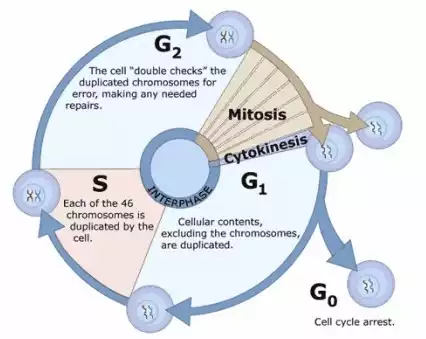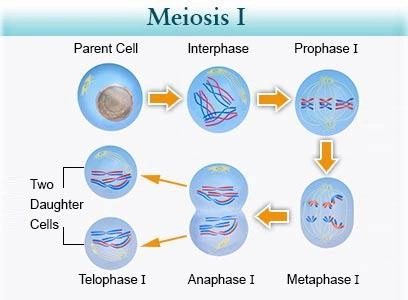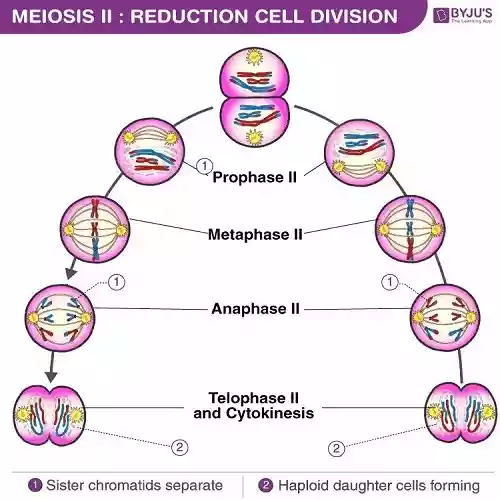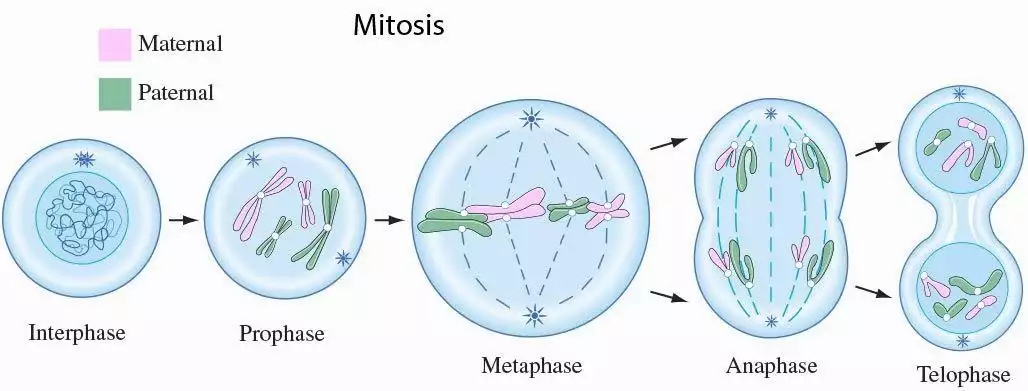Mitosis Vs Meiosis: A Comprehensive Analysis And Review
Question
Task: Provide a Short note on Mitosis Vs Meiosis.
Answer
Introduction
In the medical or biological discipline, the actual source of the meiotic is not well described in the chapter of eukaryotic history. The topic has always been a point of debate since the division by the method of meiosis is very crucial for the continuation of the sexual life cycle. Although the process of meiosis has been evolved from the methodology of mitosis cellular division, it consists of four major stages. The high complexity in the process of Meiosis has actually posed a contradiction to the meiotic origin argument put forward by Darwin. We have drafted this article on mitosis vs meiosis to make the reader understand the life cycle of an organism by the cycle of cell division. By reading this article on mitosis vs meiosis you could understand how the genes are transferred from the mother cell to the daughter cells.
Cell Cycle
In this article on the topic of mitosis vs meiosis, the context of the eukaryotic cell is taken which passes through a lot of stages through its lifetime and hence signified as the cell cycle. In between the synthesis phase of the cell there occurs to gas which is termed G1 and G2 respectively. The synthesis phase is generally denoted with the alphabet S. The phase in the cell division where the duplication of the genetic material is denoted alphabet M.

G1 stage – In this stage the cell prepares itself for the cell division and hence evident changes in it are metabolism could be observed. After a certain period, the cell totally gets ready for its division and moves the next stage of synthesis S. The point when the cell enters into the synthesis stage from the gap 1 stage is termed as restriction point.
S stage – In the synthesis stage, the genetic information i.e. The DNA would get multiplied. After this process, each chromosome in the nucleus of the cell would be comprised of two sister chromatids.
G2 stage – In this gap, the materials inside the cell are well prepared for multiplication after the synthesis stage are assembled.
M stage – In this stage both the process of cell division and nuclear division takes place. The process of cell division could be termed as cytokinesis and the division of the nucleus could be termed as mitosis.
The overall difference between Mitosis and Meiosis
The process of cellular division by Mitosis would actually result in the generation of two daughter cells. The generating daughter cells would actually possess the equal number of chromosomes its mother cell had. Apart from this, the daughter cells should have the same kind of chromosomes its mother cell had possessed. If said in a very rough manner the process of mitosis is the division of the nucleus into two identical nuclei.
If taken the case of Meiosis, the process starts from two parental cells and result in the birth of four daughter cells. In the process of cell division by meiosis, the number of chromosomes gets reduced to half the parental cell had possessed. This process of cellular division is only found among the organisms which come under the category of multicellular eukaryotes and go on with the reproduction cycle in a sexual manner.
Meiosis- An elaborate approach
As mentioned above in this report on mitosis vs meiosis, the process of meiotic cell division involves the conversion of two parental cells into four daughter cells. Since the chromosomes are divided into half of the parental cells, the daughter cells possess only half of the genetic information. The cells which undergo this type of cellular division are also called sex cells. They are known as sperms in the male organism and egg in the female organism respectively.
If described the whole process of Meiosis in a scientific way the division of diploid cells gives birth to the haploid sex cells or gametes. The whole process of the cellular division in the meiosis happens by the two-consecutive division of the cell and its nucleus. These stages could be termed as Meiosis I stage and Meiosis II stage. The process of meiotic cell division could be classified or segregated into nine stages which illustrated below. Let us take a look at it elaborately.
Meiosis Stage 1

Interphase
- The first thing that happens in the phase of interphase is the duplication of the genetic information. By the process of duplication, two sets of chromosomes are generated which shares exactly the same characteristics.
- There is generated a pair of centrosomes outside the nucleus in the cellular plasma in which of the posses paired centrioles. These components are considered very significant for the happening of cellular division.
- It is from these centrosomes that the microtubules are generated in the stage of interphase.
Prophase 1
The process of Prophase 1 is further divided into five stages.
- Leptotene – In this stage the genetic material which was duplicated, starts to come together and condense.
- Pachytene – Chiasmata is formed by joining the crossing over pairs of homologous chromosomes.
- Diplotene – The chromosomes which are homologous and identical in manner starts to get separated. It should be noted that in this stage the chromosomes are still connected to the chiasmata.
- Diakinesis – In this stage the process of separating the chromosomes continues as in diplotene. The chiasmata are placed at the end or tip of the chromosomes in this stage.
- Prometaphase 1 – This is the last stage of the prophase 1. In this stage, the spindle apparatus could be traced in the cell. It is by the means of kinetochores that the chromosomes are attached to the spindle fibers.
In this stage, some other movements and metabolism happen in the cell, which is described below.
- The duplicated genetic materials would acquire the shape of the English alphabet X after the process of condensation. These X shaped genetic materials could easily be traced in a cell via a microscope.
- The chromatids which are formed after the duplication of the genetic information are transformed into two identical sister chromatics because of the condensation.
- After that stage, the whole chromosomes in the cell get paired which in result brings both chromosome 1 and chromosome 2 together.
- It is only by the process of crossing over or recombination that the small section of genetic information is shared by the chromosomes.
- When the stage of Prophase 1 comes to an end the nuclear membrane gets dissolved and the chromosomes get free in the cell.
- After this, it is by the meiotic spindle that the chromosomes get pulled over by connecting via microtubules.
Metaphase I
According to the metaphase plate formed in the cell, the bivalent or the homologous pairs of the chromosomes are assembled in a double row. The paired chromosomes are arranged in a very random fashion since the poles concerned to the spindle apparatus are placed randomly with respect to the metaphase plate.
- The chromosomes formed the prophase 1 are arranged oppositely by keeping the boundary as the center of the cell.
- By the means of the meiotic spindle, the centrioles are pulled towards the opposite sides.
In this stage, only one single chromosome gets attached to the meiotic spindles.
Anaphase I
- Continuing the process as followed in the metaphase 1, the bivalent chromosomes go on moving apart and get separated.
- Although, unlike in the process of mitosis I and mitosis II, the bivalent chromosomes stay together in the Meiosis I.
Telophase I
- As in the previous stage of Anaphase I, the chromosomes continue to move apart to the opposite sides.
- In the end, the required set of chromosomes is collected at the opposite poles.
- The chromosomes produced throughout the process get diffused and two new membranes for two separate nuclei start to generate.
- As in the previous stage of Anaphase I, the chromosomes continue to move apart to the opposite sides.
- In the end, the required set of chromosomes is collected at the opposite poles.
- The chromosomes produced throughout the process get diffused and two new membranes for two separate nuclei start to generate.
Cytokinesis
In the final section of the Meiosis, the cytokinesis takes place and hence separate generates separates two cells. By the process of Meiosis I, the process of reduction takes place. The cells which get created i.e. the haploid cells get the exact copy of the chromosomes from the parental cells.
Meiosis Stage II

The steps involved in the cell division process of Meiosis II are the same as that of the processes done n mitosis. The only difference between the two of them is the number of chromosomes. The number of chromosomes would be actually half in the Meiosis stage II as compared to that of the mitosis cell division. The aim of genetic diversity is achieved in this process of cell division by the efficient exchange of the DNA at the stage of Meiosis I in between the bivalent chromosomes. The factors like unarranged arrangement of both paternal and maternal chromosomes in Meiosis I stage and random arrangement of bivalent chromatids in the stage of Meiosis II contributes to the cause of genetic diversity.
Prophase II
- In this phase, the resultant daughters get only a set of 23 chromosomes.
- To be divided or distributed among the daughter cells, the chromosomes get compressed and form the shape of the English alphabet X.
- After this process, the membrane in the daughter cell gets disappeared and thereafter let loose of the chromosomes in the daughter cells.
- The components of the meiotic spindle start to getting reappear along with the centrioles duplicate.
Metaphase II
- In the phase, the chromosomes of the resultant daughter cell after the process of the cellular division gets arranged in a line along with the equator.
- The position of the centrioles in the daughter cells would be at the opposite ends of the pole.
- Starting from the opposite poles of the daughter cells, the sister chromatids get connected with the meiotic spindle fibers.
Anaphase II
- Towards the opposite poles of the daughter cells, the chromatids get pulled. This pull is done by the meiotic spindle.
- When the chromatids get separated from each other, the daughters start to possess individual sets of chromosomes.
Telophase II and Cytokinesis
- In this last stage of the meiosis II, the chromosomes would be placed at the two opposite poles.
- Unlike the chromatids, the full arrangement of chromosomes gets assembled at the poles of the daughter cells.
- After all these advancements two separate daughter cells are created where total cytokinesis takes lace by the generation of the cellular membrane in between them.
- When these cells get separated from each other practically the cytokinesis takes place.
- Physically speaking the process would result in the generation of four granddaughter cells that have a half set of chromosomes.
We hope that you have made yourselves well acquainted with the ideology of Meiotic cellular division by reading the above section of this mitosis vs meiosis report.
Mitosis: A broad outlook
In the process of Mitotic cell division, a mother cell is being divided into two daughter cells. The created daughters would be very identical and congruent to each other. The division is done by partitioning the genetic information into two identical and similar sets in the nucleus. It is by the process of Mitotic cell division that most of the cell division is done in the human body. If described the mitosis in the biological context, the process of mitosis comes under the category of eukaryotic cell division which results in the generation of daughter cells from a single parental cell in the synthesis stage. The whole process of the mitotic cell division in the context of an animal cell would get completed in a period of one hour only. It is by the mitotic apparatus that the sister chromatids and another part of the cells get segregated inside the parental cell. The separation of the nucleus in the parental cell is termed as karyokinesis and the division of the whole-cell which happens in the later stage of the cellular division is called cytokinesis. It would be only after the process of cytokinesis, that the process of cell division gets completed to generate two daughter cells.
In most of the organisms, the asexual mode of reproduction is conducted by the process of mitotic cell division. The primary generation of the cell happens through the fusion of two gametes or the haploid cells which contains only half the genetic information. The resultant cell after the fusion would be termed as the diploid zygote. It is then after the mitotic cell division of the zygote which makes it possible for the growth of the organism. When the organism gets fully matured, the relevance of the mitosis gets restricted to the replacement of the existing cells, unbalanced creation of tumor, and healing process of the injury.
Although the cellular division by the method of mitosis is very common the progress of it could be classified into f phases, which could be stated as prophase, prometaphase, metaphase, anaphase, and telophase.
For the purpose of populating the body of an organism with new cells, the body adopts a mitotic cellular division.

Prophase
Early Prophase
Since it is the primary stage of the cellular division, the basic metabolism of the cell changes. The cell also starts to show some evident changes in the structure and characteristics of the organelle. As a precursor of the cellular division, the chromosomes, pose itself for the division processes. As a precursor of sharing the chromosomes, the miotic spindles starts to appear. You could affirm that a cell is ready to be divided if the ribosome generating part disintegrates in the cell.
Late Prophase
This stage is also known as prometaphase. In this stage, the mitotic spindle which was generated in the early prophase stage gets joined to the chromosomes and arranges it further for the division. After the condensation process of chromosomes, the membrane of the nucleus starts to wade away. After a while, the chromosomes get pulled to the further limit by the means of the mitotic spindle.
Metaphase
The developed spindles arrange the chromosomes to the middle or equator of the cell. The chromosomes would be arranged through the equator of the cell in a linear manner. It is parallel to the metaphase plate that the chromosomes get settled. The microtubules also get attached to the kinetochore position of each chromosome.
The cell makes an analysis of its progress and ensures the arrangement of chromosomes throughout the metaphase plate by the method of joining the microtubules with kinetochores before entering into the stage of Anaphase.
Anaphase
In this stage of the cellular division, the identical chromatids get segregated from each other. After being separated from each other they move toward the opposite end of the poles. The progress would be in the below-given progression. Please have a good look at them.
- In this stage of the cellular division, the condensed chromosomes get divided by pulling towards the opposite poles of the cell.
- The organelles of microtubules get visible in the cells and thus get attached to the chromosomes and start to pull them apart from centriole. In this process, the poles get separated and thus the cells appear to be a little bit elongated.
The movements that happen in the process of Anaphase are made possible by the tool of motor proteins which in fact are found along with the microtubule tracks. As per the motion of the microprotein in the cellular division of Mitosis, both the chromosomes and microtubules travel along with them.
Telophase
When the cell enters the stage of telophase the process of division almost gets to its end. In this stage, the total cytokinesis happens and the daughter cells regain their normal shape. We have enlisted the whole process of telophase in the below section. Let us have a look.
- The organelle of the mitotic spindle starts to appear and act as a building block.
- After a while, the nuclear membrane starts to reappear in this stage. The nuclear membrane, nucleoli starts to appear as a part of maturity.
- After all the movements and metabolism in the cell, the chromosomes which were condensed in nature start to unravel and come back to their stringy form.
Now we have learned all the basic phenomenon under the stages of the mitotic and meiotic cellular division. It should be noted that the two daughter cells which could be created after the cellular division of Mitosis contains around 46 chromosomes which are as same as that in the parent cells. Though in the process of meiotic cells, the gametes or the haploid cells are formed and hence thee daughter cells only contain a total of 23 chromosomes. The cells like sperms and eggs come under the category of haploid cells.
The distinction in between the process of Mitosis vs Meiosis
You have now well knowledge of metabolic changes under the process of mitosis vs meiosis cellular division. Let us now explore more into the differences between the cellular division of mitosis vs meiosis.
|
MITOSIS |
MEIOSIS |
|
By the process of Mitotic, only asexual reproduction could be attained. |
Unlike Mitotic cellular division, the meiotic process helps in proceeding with sexual reproduction. |
|
The daughter cells are the exact copy of the parental cells. |
The new cells possess different characteristics than that of the parental cell. |
|
In the process of Mitosis, there is not much significance or scope for crossing over. |
In this sort of cellular division, actual exchange and mixing up of genetic information takes place. |
|
A solitary division takes place in the cell division. |
There are two stages of division in this process. |
|
Absence of homologous pairing. |
Presence of homologous pairing. |
|
The parental cells could be either haploids or diploids. |
The process of meiosis could only happen from the diploid parental cells. |
|
The daughter cells generated in this process would only be diploids. |
In this process of cellular division, four haploid daughter cells are generated. |
|
There would not be any change in the number of chromosomes, in the case of daughter cells. |
In this case, the daughter cells only possess half the number of chromosomes from that of the parental cells. |
|
The joining or the process of the pairing of chromosomes doesn't happen in this case. |
It is in the phase of zygotene in between the stages of Metaphase I and Prophase I that the pairing of chromosomes takes place. |
|
The process has the ability to multiply any sort of cells rather than the sex cells. |
The process is majorly aimed at generating the gametes or the sex cells. |
|
It is in the somatic cells that the process of mitotic division takes place. |
The major destination of the meiotic division is germ cells. |
|
In the stage of telophase in this process, the spindle fiber gets disappeared. |
Even the stage of Telophase I the spindle fibers stays in the cell. |
|
The process of nuclear division or Karyokinesis happens in the stage of Telophase. |
It is in the stage of Interphase I that Karyokinesis happens in the cell. |
|
The overall time taken for the process of Mitotic cellular division is comparatively very low. It just takes only a couple of hours. |
The process of cell division takes comparatively a large time span, especially in the stage pf prophase. In most of the cases, the process almost takes some days. |
|
It is in the stage of Anaphase, that the organelle of the centromeres is done. |
The splitting of the centromeres only happens in the stage of Anaphase I. |
Table 1: Variations in mitosis vs meiosis.
Evolution of Meiosis from Mitosis
It could be assumed that the primary cell which was created in the universe was a haploid one that only possessed a solitary set of chromosomes, which would have transferred to other cells by the cellular division of mitosis. Many of the primary type of cells which existed in the archaic era like fungi and protists, the cell division happened through the process of mitotic cell division. It was after a few centuries of evolution that the diploid cells appeared on earth. Either by the process of endomitosis or the fusion of cells, the first diploid cell was seen on the earth. If investigated further, it could be observed that the process of mitosis plays a significant role in the history of living ecology. All of the living cells found on the earth are the prokaryotic homologs created from the process of mitotic cell division in the eukaryotic cells. Although the higher similarity in mitosis vs meiosis cellular divisions would point the light towards that the meiotic cells are the one which has evolved from the cells which were divided mitotically. The process of mitotic cell division is very common and most found among the eukaryotic cells, although the meiosis is only found on the organisms which propagate their lineage using sexual reproduction.












